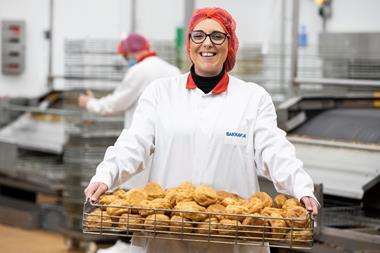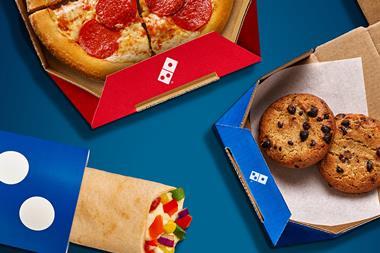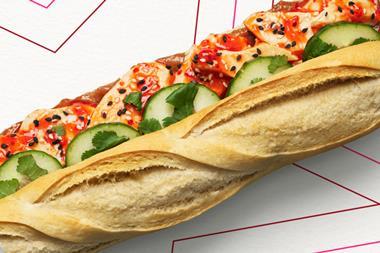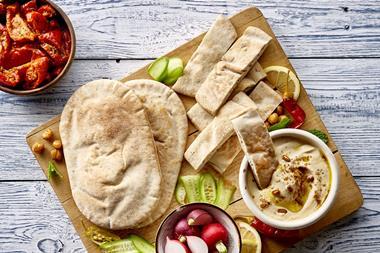Biscuits are back in growth, with sales up 2.6% to £2.5bn, according to an annual report by biscuit manufacturer Pladis.
An Innovative Year for Biscuits 2017 breaks down the performance of sub-categories within biscuits, noting high points as well as potential areas for improvement over the next year.
“After a turbulent year in 2016, biscuits returned to growth in 2017, buoyed by some outstanding new product launches,” said James Thomas, customer marketing director, Pladis UK and Ireland. “The continued engagement and love that the UK has for biscuits was backed up by the fact that the category grew across all channels in 2017, translating into growth of over £60m.”
The report was published alongside an updated version of its Better Biscuits Best Sellers initiative, aimed at the convenience market.
Here’s what you need to know:
Own label is storming ahead
Own-label biscuits stormed ahead in 2017, with value sales up 8% making it a major contributor to biscuits’ return to health. A number of categories contributed to this growth, including sweet, savoury, Christmas and healthier biscuits, while special treats declined.
With stiff competition, retailers are paying increasing attention to own label – it allows them a point of difference from competitors. It paid off for Tesco with sales up 17.7% taking its own-label biscuit sales to £165m. Aldi and Lidl also saw double-digit increases of 15.3% and 11.8%, respectively.
“Own-label biscuits have an important role to play as they offer both value and quality and increasingly bring variety, innovation and premiumisation to the category,” said Rachel Dixon, head of retailer brands at Pladis UK and Ireland. “There is huge diversity in own label, from value basics in the discounters to luxurious and innovative products that push category boundaries in Marks & Spencer.”
Regional differences
Pladis has updated its Better Biscuits Best Sellers category initiative, designed to grow category sales in the convenience sector. According to the manufacturer, 80% of total biscuit sales come from just 7% of products, so stocking the best-sellers is vital, particularly in c-stores where shelf space is limited.
This year, Pladis is including splits for Scotland and London. Up north, more shelf space is dedicated to Tunnock’s Teacakes, shortbread and oatcakes, with retailers left to decide which brands they stock for the latter two due to the prevalence of them in that region.
London, meanwhile, has more of a focus on classic biscuits, with additions such as Continental wafers and Bahlsen Leibniz biscuits, which have proven popular in the capital.
McVitie’s Thins was top NPD
Thin is in, when it comes to biscuits at least. McVitie’s Digestive Thins were the top-selling piece of NPD in 2017, racking up £15m in sales since launching in January, followed by Oreo Thins at £8m.
“The Thins launches were not only exceptional for their uniqueness, but also McVitie’s Digestive Thins claimed the title of biggest sweet biscuits launch in a decade, with sales of £15m in 2017, a worthy successor to McVitie’s Digestive Nibbles which took the top spot in 2016,” said Thomas.
Cadbury Roundie – available in dark chocolate, caramel wafer and milk chocolate – accumulated £6m in take home sales since its launch in April. Nutella’s B-ready also made £6m. In total, 3% of biscuits’ value in 2017 came from NPD.
Novelty biscuits lose their shine
Novelty biscuits was one of the few areas in the category to suffer a decline in sales, with value down 2.9% to £107m. This was attributed to penetration losses, although the products remain a popular option for kids’ lunchboxes.
The biscuits were often bite-sized and packed in individual bags – many could be characterised by their novelty shape and were either coated or filled.
Barny – the sponge bears with chocolate centres – outshone the category with sales up 11.4% to £13m, while Maryland’s Mini Cookies added a cool 9.5%. McVitie’s Iced Gems also had a good year with sales up 21.6%. Sales of Burton’s Jammie Dodgers, meanwhile, fell 11.0%.
What does the future hold?
Nutrition is becoming increasingly important in the biscuits category and Pladis believes snackers will demand added functional benefits, new textures and flavours to help achieve this in the future.
Notably, 42% of consumers, according to Pladis, have limited the amount of snacks they buy compared to a year ago, as a result of health concerns. With biscuits included in the nine food and drink categories tasked with reducing sugar levels by 20% by 2020, sugar-free biscuits may gain popularity.
Protein will also likely be a key component of this, as snackable protein has been widely popularised, particularly through the likes of social media. Snack foods already count for the largest proportion of high-protein food and drink. And, this could present an opportunity for savoury biscuits, which provide greater scope for adding ‘superfood’ ingredients without sacrificing flavour. After all, taste will always trump health.



































No comments yet